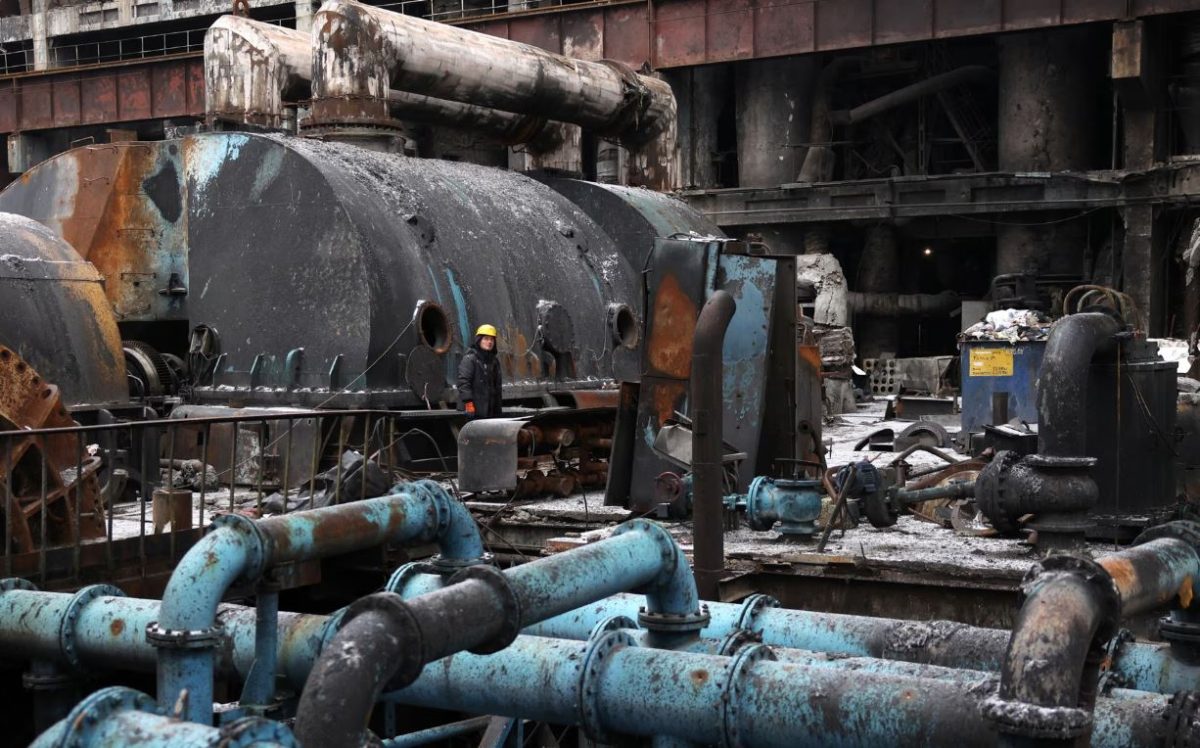Dozens of drones were also used in the attack, which comes as both Moscow and Kyiv manoeuvre ahead of Donald Trump’s return to the White House in January.
Later on Friday, Vladimir Putin’s spokesperson Dmitry Peskov praised Trump, saying his criticism of Ukrainian strikes inside Russia “impresses us”.
The alignment on the strikes between Trump and the Kremlin will cause alarm in Ukraine, where there is hope that Trump may prove surprisingly amenable to continuing US military aid to the country but also fear that his history of pro-Russian rhetoric could see Kyiv forced to sign an unfavourable deal.
Russia has been systematically targeting Ukraine’s civilian energy infrastructure in recent months, in a bid to sow chaos in the country ahead of winter, with temperatures due to drop well below zero in most of Ukraine over the coming days.
Energy minister Herman Halushchenko stated energy workers were doing everything possible to “minimise negative consequences” for the energy system.
President Volodymyr Zelensky claimed on Friday morning that Russia had used 93 missiles and over 200 drones in the attack. He added Ukrainian forces had managed to shoot down 81 of the missiles, including 11 which had been successfully targeted by F-16 planes. Ukraine’s air force announced the Russian attack included hypersonic Kinzhal missiles launched from the air.
Svitlana Onishchuk, head of the western Ivano-Frankivsk region, said the area had suffered “the biggest attack since the beginning of the full-scale war”, from cruise missiles and drones.
“As Ukrainians wake to the coldest day of the winter so far, the enemy tries to break our spirit with this cynical terrorist attack,” stated Maxim Timchenko, CEO of the private energy company DTEK.
“Right now, multiple DTEK teams are urgently assessing damage to our power stations and deploying all possible resources to restoring power for the people of Ukraine,” Timchenko added.
The Kremlin claimed the latest strikes were in retaliation for a Ukrainian attack on an airbase in southern Russia last week using US-provided long-range missiles. The Joe Biden administration last month lifted long-standing restrictions on using missiles for hitting targets inside Russia.
Trump used an interview with Time magazine this week to criticise the decision.
“It’s crazy what’s taking place. It’s crazy. I disagree very vehemently with sending missiles hundreds of miles into Russia. Why are we doing that? We’re just escalating this war and making it worse,” said Trump.
“The statement fully aligns with our position, with our view on the reasons for escalation,” Peskov told reporters on Friday, adding, “That impresses us. It is obvious that Trump understands exactly what is escalating the situation.”
Russia’s attacks on energy infrastructure have resulted in repeated emergency shutdowns and scheduled power cuts, as the battered grid struggles to cope with demand. Around half of the country’s generating capacity has been destroyed over nearly three years of war.
Andrian Prokip, a Kyiv-based energy expert with the Kennan Institute in Washington DC, told the Guardian earlier this week that he expected the attacks to continue ahead of Trump’s return.
“I have a feeling that they would like to pressure the Ukrainian power system as much as they can before Trump’s inauguration. The Russians would like Trump to believe that Ukraine is already destroyed,” added Prokip.
Zelensky, in response to Friday’s attack, said: “This is Putin’s ‘peace plan’ – destroy everything. This is how he wants negotiations, by terrorising millions of people.”
Trump has promised to bring Russia and Ukraine to the table and end the war, but many observers of the conflict say there is little sign Russia wants to negotiate, except on terms that would be unacceptable to Ukraine.
On 21 November, Russia used an intermediate range hypersonic missile, which Putin has dubbed the Oreshnik, for the first time, striking an industrial plant in the city of Dnipro. Putin has used the missile, which has nuclear capabilities, as a way of raising the stakes and threatening the West, and has said it could be used again, including against “decision-making centres” in the country.
US officials warned on Wednesday that another Oreshnik strike on Ukraine could be imminent, though there was no sign the weapon was used in Friday’s attack.
